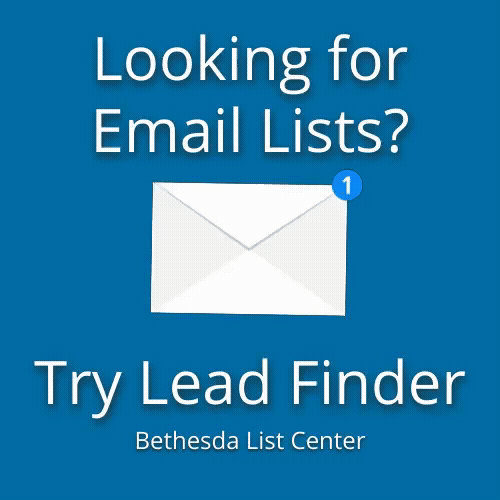Looking for Lists?
Contact us today!
Call: 301-986-1455
CAN-SPAM Act: A Compliance Guide for Business
Do you use email in your business? The CAN-SPAM Act, a law that sets the rules for commercial email, subsequently establishes requirements for commercial messages, gives recipients the right to have you stop emailing them, and spells out tough penalties for violations.
Despite its name, the CAN-SPAM Act doesn’t apply just to bulk email. Rather, it covers all commercial messages, which the law defines as “any electronic mail message the primary purpose of which is the commercial advertisement or promotion of a commercial product or service,” including email that promotes content on commercial websites. Also, the law makes no exception for business-to-business email. That means all email – for example, a message to former customers announcing a new product line – must comply with the law.
Each separate email in violation of the CAN-SPAM Act is subject to penalties of up to $16,000, so non-compliance can be costly. But following the law isn’t complicated. Here’s a rundown of CAN-SPAM’s main requirements:
1. Don’t use false or misleading header information. Your “From,” “To,” “Reply-To,” as well as routing information – including the originating domain name and email address – must be accurate and identify the person or business who initiated the message.
2. Don’t use deceptive subject lines. The subject line must accurately reflect the content of the message.
3. Identify the message as an ad. The law gives you a lot of leeway in how to do this, but you must disclose clearly and conspicuously that your message is an advertisement.
4. Tell recipients where you’re located. Your message must also include your valid physical postal address. So, this can be your current street address, a post office box you’ve registered with the U.S. Postal Service, or a private mailbox you’ve registered with a commercial mail receiving agency established under Postal Service regulations.
5. Tell recipients rather how to opt out of receiving future email from you. Additionally, your message must include a clear and conspicuous explanation of how the recipient can opt out of getting an email from you in the future. Craft the notice in a way that’s easy for an ordinary person to recognize, read, as well as understand. Also, creative use of type size, color, and location can improve clarity. Give a return email address or another easy Internet-based way to allow people to communicate their choice to you. You may create a menu to allow a recipient to opt out of certain types of messages, but you must include the option to stop all commercial messages from you. Make sure your spam filter doesn’t block these opt-out requests.
6. Honor opt-out requests promptly. Any opt-out mechanism you offer must be able to process opt-out requests for at least 30 days after you send your message. However, you must honor a recipient’s opt-out request within 10 business days. You can’t charge a fee, require the recipient to give you any personally identifying information beyond an email address, or make the recipient take any step other than sending a reply email or visiting a single page on an Internet website as a condition for honoring an opt-out request. Once people have told you they don’t want to receive more messages from you, you can’t sell or transfer their email addresses, even in the form of a mailing list. The only exception is that you may transfer the addresses to a company you’ve hired to help you comply with the CAN-SPAM Act.
7. Finally, monitor what others are doing on your behalf. The law makes clear that even if you hire another company to handle your email marketing, you can’t contract away your legal responsibility to comply with the law. Both the company whose product is promoted in the message and the company that actually sends the message may be held legally responsible.


